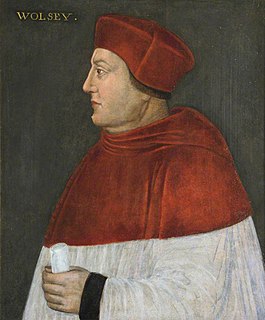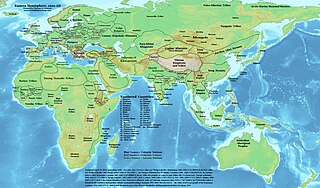
As a means of recording the passage of time, the 13th century was the century which lasted from January 1, 1201 through December 31, 1300 in accordance with the Julian calendar. In the history of European culture, this period is considered part of the High Middle Ages, and after its conquests in Asia the Mongol Empire stretched from Eastern Asia to Eastern Europe, while the Islamic Delhi Sultanate conquered large parts of the Indian subcontinent.

The 12th century is the period from 1101 to 1200 in accordance with the Julian calendar. In the history of European culture, this period is considered part of the High Middle Ages and is sometimes called the Age of the Cistercians. In Song dynasty China an invasion by Jurchens caused a political schism of north and south. The Khmer Empire of Cambodia flourished during this century, while the Fatimids of Egypt were overtaken by the Ayyubid dynasty.
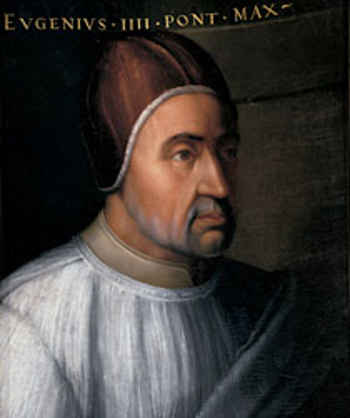
Pope Eugene IV, born Gabriele Condulmer, was Pope from 3 March 1431 to his death in 1447. He is the most recent pope to have taken the name "Eugene" upon his election.
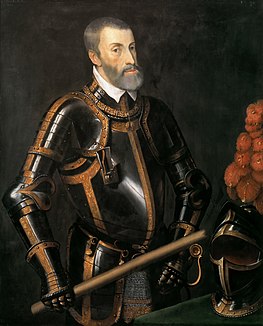
Charles V was Holy Roman Emperor from 1519, King of Spain from 1516, and Prince of the Habsburg Netherlands as Duke of Burgundy from 1506. Head of the rising House of Habsburg during the first half of the 16th century, his dominions in Europe included the Holy Roman Empire extending from Germany to northern Italy with direct rule over Austria and the Low Countries, and a unified Spain with its southern Italian kingdoms of Naples, Sicily, and Sardinia. Furthermore, his reign encompassed both the long-lasting Spanish and short-lived German colonizations of the Americas. The personal union of the European and American territories of Charles V, spanning over nearly 4 million square kilometres, was the first collection of realms labelled "the empire on which the sun never sets".

Charles II, also known as Charles the Lame, was King of Naples, Count of Provence and Forcalquier (1285–1309), Prince of Achaea (1285–1289), and Count of Anjou and Maine (1285–1290); he also styled himself King of Albania and claimed the Kingdom of Jerusalem from 1285. He was the son of Charles I of Anjou—one of the most powerful European monarchs in the second half of the 13th century—and Beatrice of Provence. His father granted Charles the Principality of Salerno in the Kingdom of Sicily in 1272 and made him regent in Provence and Forcalquier in 1279.
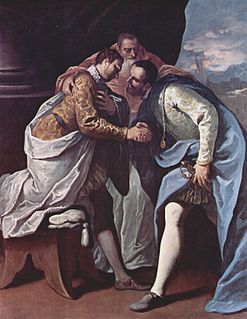
The Italian Wars, often referred to as the Great Wars of Italy and sometimes as the Habsburg–Valois Wars, were a series of Renaissance conflicts that involved most of the Italian states as well as France, the Holy Roman Empire, Spain, England and the Ottoman Empire. The wars followed the end of the 40-years long Peace of Lodi agreed in 1454 with the formation of an Italic League between the Republic of Venice, the Duchy of Milan, Medici Florence, the Kingdom of Naples and the Papal States. The collapse of the alliance in the 1490s made Renaissance Italy, economically advanced but politically divided, the main battleground for supremacy in Europe.

The Duchy of Milan was a state of the Holy Roman Empire in northern Italy. It was created in 1395, when it included twenty-six towns and the wide rural area of the middle Padan Plain east of the hills of Montferrat. During much of its existence, it was wedged between Savoy to the west, Venice to the east, the Swiss Confederacy to the north, and separated from the Mediterranean by Genoa to the south. The Duchy eventually fell to Habsburg Austria with the Treaty of Baden (1714), concluding the War of the Spanish Succession. The Duchy remained an Austrian possession until 1796, when a French army under Napoleon Bonaparte conquered it, and it ceased to exist a year later as a result of the Treaty of Campo Formio, when Austria ceded it to the new Cisalpine Republic.
The Treaty of Florence, which followed the Armistice of Foligno, brought to an end the war between the French Republic and the Kingdom of Naples, one of the Wars of the French Revolution. Forced by the French military presence, Naples ceded some territories in the Tyrrhenian sea and accepted French garrisons to their ports on the Adriatic sea. All Neapolitan harbours were closed to British and Ottoman vessels.
Domenec Ram y Lanaja was a Spanish politician and diplomat who was Viceroy of Sicily in 1415–1419, succeeding Prince John of Aragon, later King John II of Aragon.
The Princes' Concordat was an agreement concluded in January 1447 between Pope Eugenius IV and the prince-electors of the Holy Roman Empire. It outlined generous concessions on the part of the Pope, particularly covering the appointment of Church positions, in exchange for the support of the German princes.
Joan Margarit i Pau, or in Spanish Juan Margarit y Pau, was a prominent Catalan prelate, a bishop of Girona and a cardinal.
Events from the year 1516 in France





